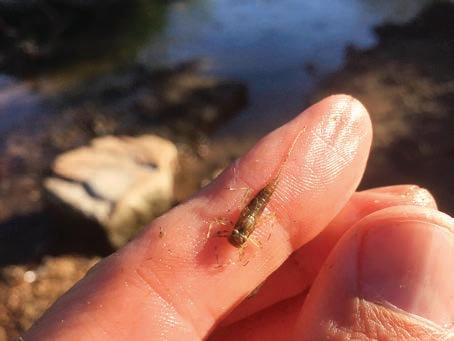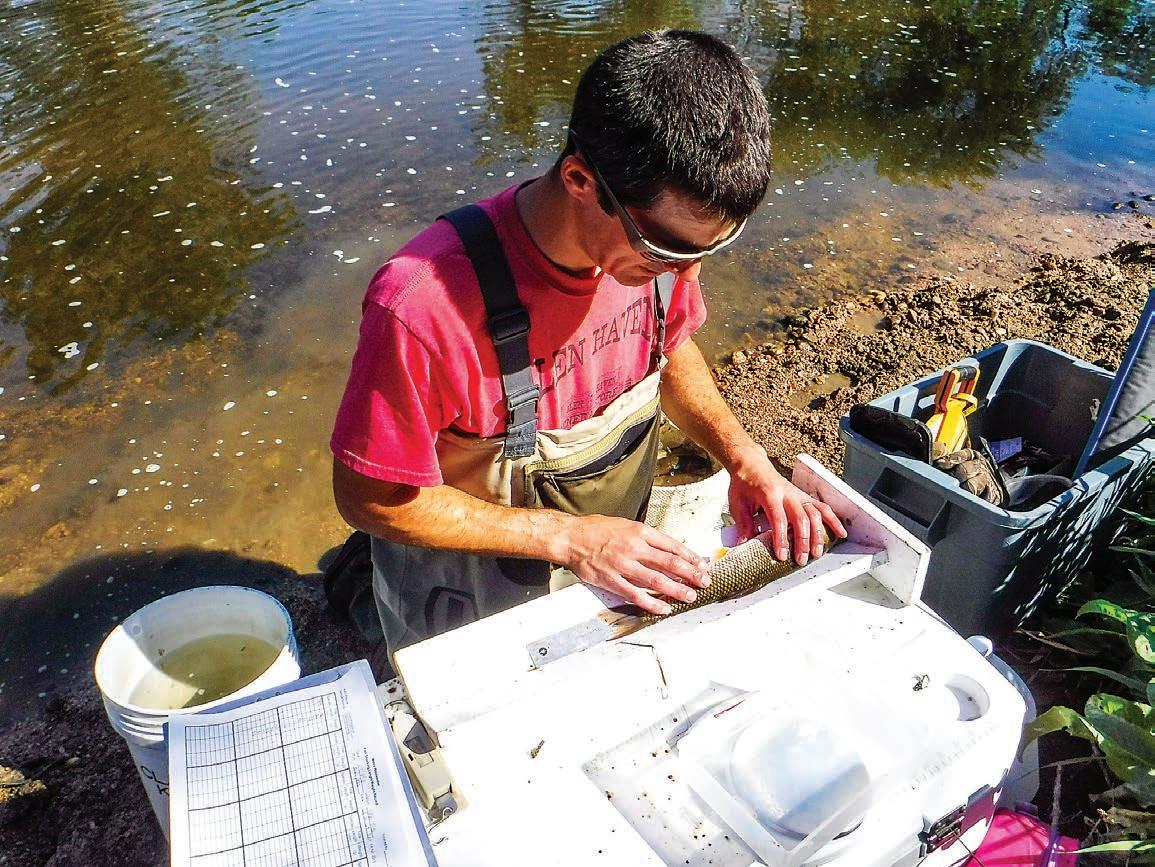
4 minute read
Scientists are studying the health of the South Platte’s aquatic life

BY BELEN WARD BWARD@COLORADOCOMMUNITYMEDIA.COM
There might be plenty of sh in the sea, but in the section of the South Platte River from the Denver Metro Water facility down to Fort Lupton, they’ve all but disappeared. rough testing, Metro Water Recovery scientists discovered that aquatic life was not present in this part of the South Platte River due to low dissolved oxygen levels. Metro Water Recovery, in an agreement with Colorado Parks and Wildlife, the United States Environmental Protection Agency and the Colorado Health Department will address the issue.
Dissolved oxygen levels mean the river is too low for aquatic life. When they did the study, the scientists found that the South Platte River from the Denver Metro Water facility down to Fort Lupton had no sh habitat.
ey started a six-phase project on the South Platte River from 88th & Colorado Boulevard to Fort Lupton in 2018 to improve aquatic life that was disappearing from low dissolved oxygen.
“Many factors cause dissolved oxygen in a river, such as runo , nutrients and how highly managed the river is and owing slowly in some locations. In addition, algae grow when the river slows down and eats up oxygen at night,” said Senior Quality Manager for Metro Water Jim Dorsch.
“A number of factors were involved and since Metro Water created the river, it made sense for us to take the lead on trying to correct it,” Dorsch said.
Scientists are working daily on the South
Platte River collecting aquatic macroinvertebrates, which are bugs. Many of these types of organisms and microhabitats live in the river, under rocks or in woody debris in the river, Dorsch said, adding that they can also live inside rocks or live in boulders.
“ e objective is to sample the macroinvertebrate that lives at the bottom of the river to assess the invertebrate which is species without a backbone to test their diversity and abundance within the river channel and determine overall aquatic life health,” said Jordan Harman, a senior water quality scientist with Metro Water.
Harman said the macroinvertebrate data is used in Colorado as the primary indicator of aquatic life health in streams and rivers. ey collect samples in the fall, and the macroinvertebrates are picked out with tweezers and placed into collection jars lled with isopropyl alcohol for preservation.
“We then send these preserved specimen samples to a taxonomic expert and they identify and count the macroinvertebrates and send the identi cation enumeration data back to us. is is simply identi cation of preserved specimens, they are not looking at live specimens,” Harman said. e scientists could get a general sense of overall water quality based on the type of invertebrates. Certain macroinvertebrates are sensitive to pollution, such as may ies, caddis ies and more. Bugs that are relatively tolerant of pollution include aquatic worms, midge larvae and more, according to Harman and Dorsch.
“When we observe a diverse group of macroinvertebrates, including sensitive species, this indicates good water quality. Dissolved oxygen is just one important aspect of overall water quality,” Harman said. e Metro Water Recovery scientists will stock the river with Colorado native species, primarily minnows, they said.


Harman said these macroinvertebrates tell them what they do and a lot about water quality. If certain kinds of bugs are present, the water quality can sustain these macroinvertebrates, and they’re also an essential part of the food chain for the sh that consume these bugs.
“We amended that agreement and since then we built four di erent drop structure locations along the river to improve habitat and will select a fth spot to construct by fall. en when complete, we will go into phase six and continue ongoing monitoring of aquatic life forever at all these locations,” Dorsch said.
Dorsch said to improve the water quality, stirring it and building miniature waterfalls to put the oxygen back in the river over time, so it starts to get better. In addition, they will place large rocks that will provide protective cover for sh, create pools close to the bank of the fast-moving water—trees will be plants and shrubs for aquatic shade and creates a riparian zone, which is a vegetation area between land and river.

“ ey are not very big, but we love our native species and want to protect them every chance we can,” Dorsch said. “We also target Johnny Darters and Iowa Darter which are the most sensitive species of minnows in the South Platte River.” e Metro Water Recovery scientists’ work didn’t go unnoticed in saving the aquatic life on the river — they received the National Environmental Achievement Award from the National Associations of Clean Water Agencies (NACWA) for the South Platte River Aquatic Life Habitat Improvements Projects, according to a news release. is fall, the honorees will be recognized at the NACWA’s winter conference in Sonoma, CA.
While Metro is working on the Platte River project, Dorsch said shing will still be allowed even when constructing ri es which are fast-moving sections of stream and other habitat improvements farther down the river. e scientist will continue to monitor the water quality daily and how much sediment is released during construction e orts.
“We don’t want that sediment going downstream and impacting aquatic life. My sta and I are out here every day checking on what’s going on and what’s gone wrong. If there are problems, we will correct it,” Dorsch.








“We love getting awards, (but) like most biologists — we come in do our job,” Dorsch said.
“It’s nice to get the award,” Harman added. “People aren’t aware of the work we do, so it’s kind of nice to get some recognition and people realize we’re out here in the river.”








